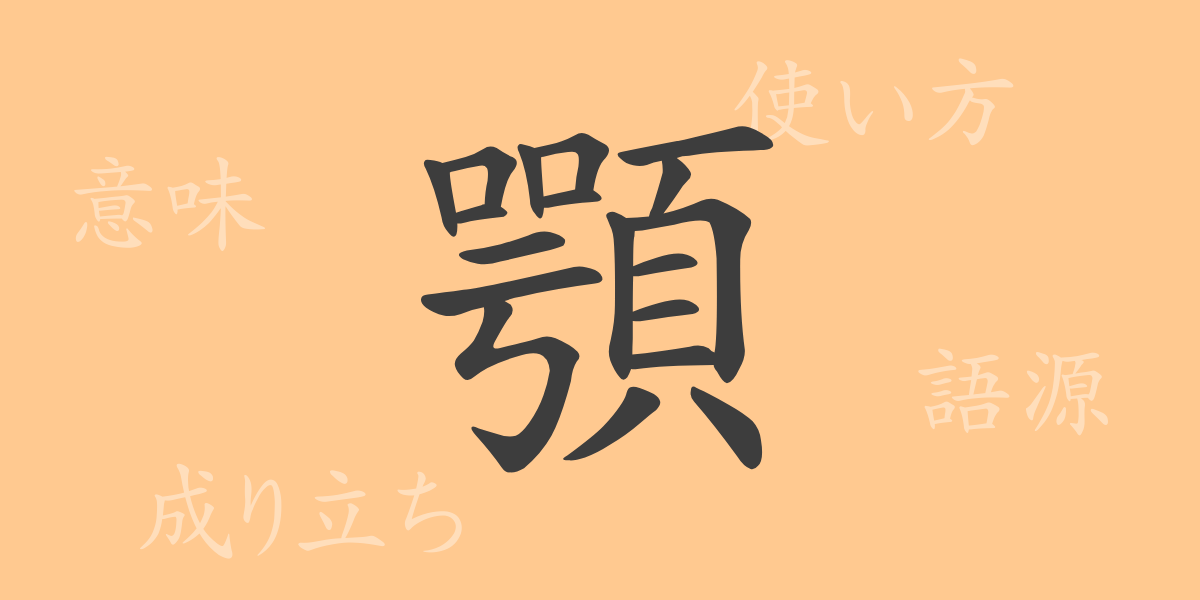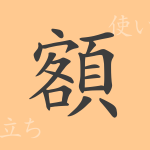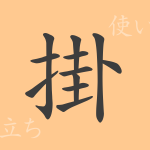The rich world of expression in the Japanese language is home to countless kanji characters. Among them, “顎” (Ago) is a fascinating character that not only refers to a part of our body but also deeply relates to culture and idiomatic expressions. This article delves into the origins of the kanji “顎” (Ago), its usage, and even idioms and proverbs used in everyday conversation to reveal its full scope.
The Origin of 顎 (Ago)
The kanji “顎” (Ago) has been used for a long time to refer to a part of the human body. This character is derived from the combination of the shape of an open “mouth” (口) and the “bone” (骨) beneath it. As this combination suggests, “顎” (Ago) signifies the bone part related to the opening and closing of the mouth, and its shape is reflected in the kanji itself.
The Meaning and Usage of 顎 (Ago)
The kanji “顎” (Ago) refers to the skeletal part at the lower portion of a person or animal’s face. In a broader sense, it denotes the entire lower jaw that moves when opening the mouth. Metaphorically, it can also express the strength of a person’s will or decision. For example, the phrase “using the chin” (顎で使う – あごでつかう – ago- de -tsuka-u) is an idiom that describes the act of commanding someone in a condescending manner.
How to Read 顎, Its Stroke Count, and Radical
The kanji “顎” (Ago) is included in the list of commonly used kanji in Japan and is frequently encountered in daily life.
- Reading: The onyomi (Chinese reading) is “がく” (gaku), and the kunyomi (Japanese reading) is “あご” (ago).
- Stroke Count: It has a total of 18 strokes.
- Radical: The radical is the face part (顔部 – かおぶ – kaobu).
Idioms, Phrases, and Proverbs Using 顎 (Ago) and Their Meanings
Idioms, phrases, and proverbs including “顎” (Ago) are used in various contexts in the Japanese language. For instance, “using the chin” (顎で使う – あごでつかう – ago -de -tsuka-u), as mentioned earlier, indicates using someone in an oppressive manner. “Sticking out the chin” (顎を出す – あごをだす – ago- wo- da-su) means finding oneself in a difficult situation, while “shaking the chin” (顎を振る – あごをふる – ago- wo- fur-u) signifies a gesture of denial. These expressions derive their meanings from the movements and positional relationships of the chin, showcasing the richness of the Japanese language.
Conclusion on 顎 (Ago)
While the kanji “顎” (Ago) carries the basic meaning of referring to a part of our body, it enables a wealth of expressions beyond that. The idioms and phrases involving this character teach us about the depth of Japanese culture and language. As a part of the face, the “chin” (顎 – あご – ago) plays a crucial role in our communication, and understanding its expressions and usages is extremely valuable in deepening our comprehension of the Japanese language.

























